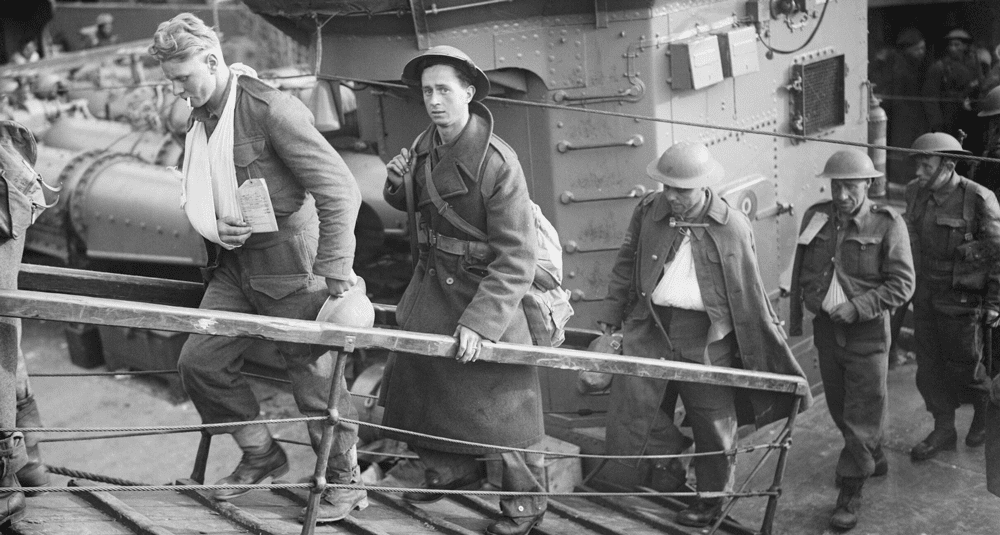What was the name given to the British army evacuation operation at Dunkirk in 1940?
Last Updated:
Operation Dynamo refers to the massive evacuation carried out by the British to rescue Allied troops surrounded in Dunkirk, northern France, between May 26 and June 4, 1940. This event, which took place at the beginning of World War II, remains one of the most dramatic and symbolic moments of the conflict, marking both a military defeat and an extraordinary demonstration of solidarity and resilience.
At that time, German forces launched a lightning offensive on Western Europe, crossing the Ardennes and outpacing the French, Belgian, and British armies. Within days, Allied troops were pushed back towards the sea and found themselves cornered in a pocket around Dunkirk, a strategic port city. Around 400,000 soldiers, mainly British but also French and Belgian, were trapped under enemy fire, threatened with annihilation or capture.
Faced with this critical situation, the British government, led by Winston Churchill, launched Operation Dynamo, named after the underground operations room located in the tunnels of Dover, England. The objective was simple but daring: to evacuate as many soldiers as possible by sea, using all available vessels, whether military destroyers or simple fishing boats.
This massive rescue operation was made possible thanks to an appeal to British civilians: more than 800 boats, nicknamed the “little boats of Dunkirk,” crossed the English Channel to pick up the soldiers. Conditions were terrible: incessant German bombardments, exposed beaches, destroyed infrastructure, lack of coordination… But despite everything, the operation managed to evacuate more than 338,000 men in just nine days, far exceeding initial expectations.
Operation Dynamo was a paradoxical success. Strategically, it was the result of a heavy defeat on the ground, with troops forced to flee the continent. However, symbolically and humanely, it was a great moral victory. The United Kingdom managed to save most of its ground forces, enabling it to continue the war and prepare for the next phase of the conflict. For many Britons, Dynamo was seen as a miracle, a manifestation of courage and national unity.
The importance of Operation Dynamo lies not only in the number of soldiers saved. It played a decisive role in the rest of the war. Without this evacuation, the United Kingdom would have been considerably weakened, or even forced to negotiate peace with Germany. Thanks to Dunkirk, Churchill was able to deliver one of his most famous speeches, declaring that “we shall fight on the beaches” and galvanizing British public opinion.
Furthermore, this operation has become a powerful symbol in British culture, often cited as an example of tenacity in the face of adversity. It is depicted in numerous works, notably in the 2017 film Dunkirk directed by Christopher Nolan, which illustrates the dramatic intensity of these events.
Finally, Operation Dynamo highlights the interdependence between the Allied armies and the civilian population. Without the mobilization of amateur sailors and makeshift ships, a large part of the troops would have been lost. This improvised but effective cooperation remains a powerful testimony to solidarity.
Operation Dynamo consisted of the mass evacuation of Allied forces surrounded at Dunkirk in 1940. It saved hundreds of thousands of soldiers, restored hope to the Allied camp, and remains one of the most iconic episodes of World War II.
history

What was the name given to the British army evacuation operation at Dunkirk in 1940?
Answer
Operation Dynamo is the name given to the heroic evacuation of Allied troops surrounded by German forces in Dunkirk in May-June 1940.